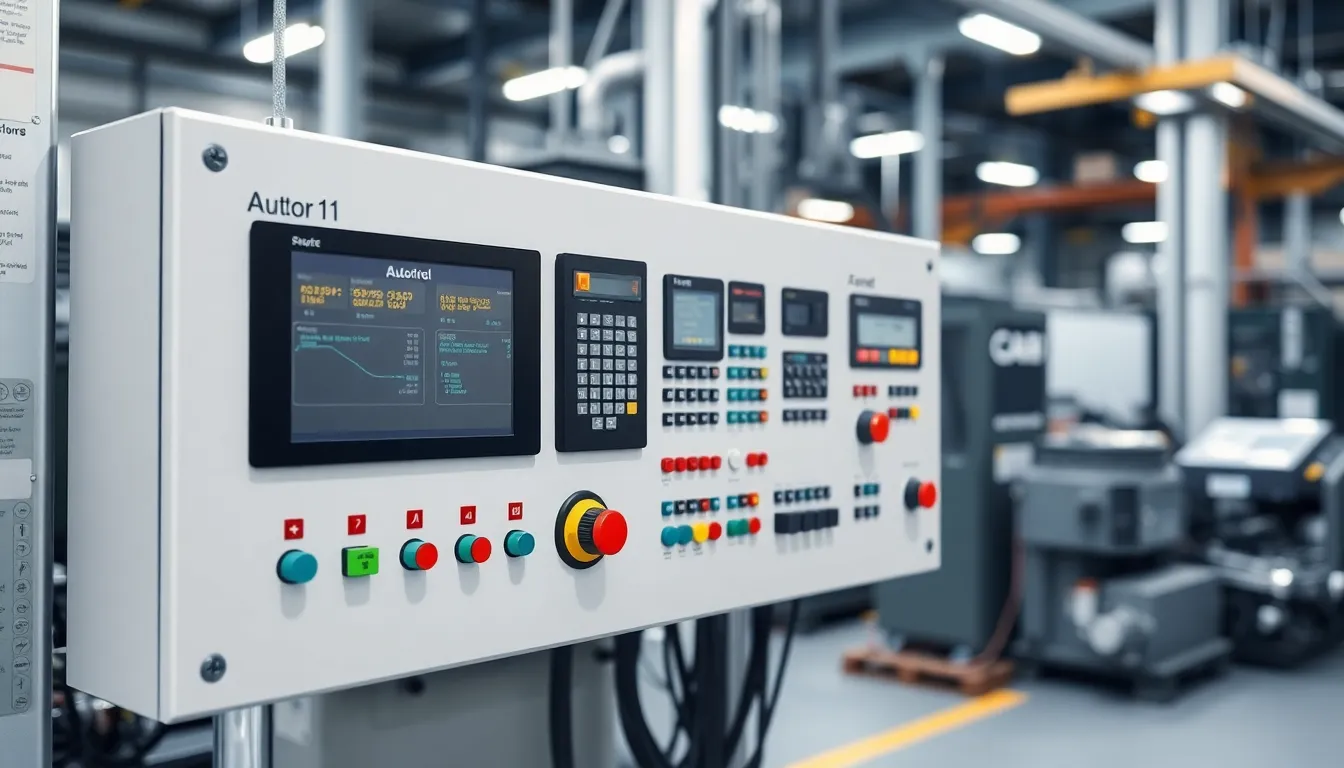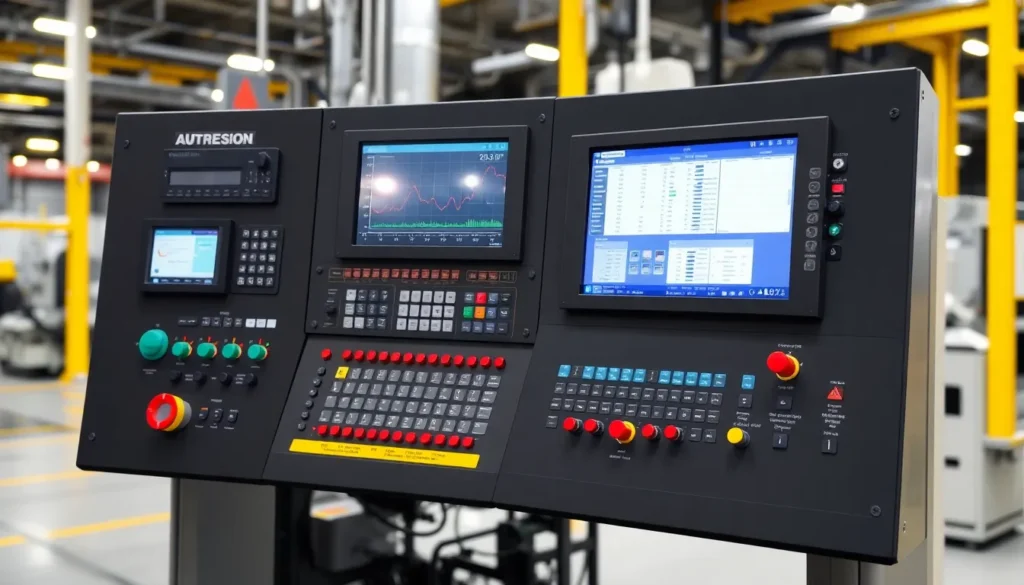In a world where everything seems to be racing towards automation, automation control panels are the unsung heroes behind the scenes. These nifty devices don’t just sit there looking pretty; they orchestrate the symphony of machinery and processes that keep industries humming along. Think of them as the conductors of an orchestra, ensuring every note hits just right.
But why should anyone care about these panels? Well, they’re not just techy gadgets; they’re the key to efficiency, safety, and productivity. Imagine a world where machines communicate seamlessly, errors are minimized, and downtime is a thing of the past. Sounds like a dream, right? With automation control panels, that dream is just a switch away. So buckle up and get ready to dive into the fascinating world of automation control panels, where innovation meets reliability—and maybe a little bit of fun along the way.
Table of Contents
ToggleUnderstanding Automation Control Panels
Automation control panels serve as vital elements in modern automation systems. They streamline communication and control across various machinery and processes, contributing significantly to operational efficiency.
Definition and Purpose
Automation control panels are centralized systems that manage and monitor industrial processes. These panels enhance productivity by allowing operators to control equipment efficiently. They facilitate real-time data monitoring, making it easier to detect issues quickly. Additionally, integration with sensors and feedback loops allows for automated adjustments that improve reliability in operations. The purpose of these control panels extends to ensuring safety standards are upheld, as they can trigger alarms or shut down systems in emergencies.
Key Components
Several key components make up an automation control panel. A programmable logic controller (PLC) forms the heart of the system, executing control commands based on input data. Human-machine interfaces (HMIs) provide operators with an intuitive way to interact with the machines. Power supplies deliver the energy necessary for operations, while contactors and relays manage electrical circuits effectively. Terminal blocks are essential for organizing wiring connections, simplifying maintenance tasks. These components work together to create a cohesive and functional automation control panel.
Types of Automation Control Panels

Automation control panels come in various types, tailored to specific applications in industries. Understanding these categories provides insights into their functionality and efficiency.
Open-Loop vs. Closed-Loop Systems
Open-loop systems operate without feedback. In these systems, commands are sent to an actuator without adjusting based on the output. For example, a basic irrigation system applies water based on a timer. Closed-loop systems involve feedback to adjust operations. These systems measure output and modify actions in real-time. An example includes temperature control in HVAC systems, where sensors provide data to regulate heating or cooling effectively.
Programmable Logic Controllers (PLCs)
PLCs serve as the backbone of automation control panels. They execute specific instructions for machinery, ensuring precise control over industrial operations. Common features include modular designs and scalability, allowing customization based on process requirements. PLCs process inputs from sensors and produce outputs to actuators, streamlining operations. Their reliability and robustness make them suitable for various environments. Industries depend on PLCs for tasks such as assembly line management and safety monitoring, enhancing overall productivity and operational efficiency.
Benefits of Automation Control Panels
Automation control panels provide numerous advantages that significantly impact industrial operations. These benefits include increased efficiency and enhanced safety measures.
Increased Efficiency
Automation control panels streamline processes by facilitating centralized control. Operators manage multiple machines through a single interface, which simplifies operations. Real-time monitoring of production helps identify inefficiencies quickly, allowing for immediate adjustments. Data analytics from these panels support informed decision-making, leading to optimized workflows. Systems like programmable logic controllers (PLCs) enhance responsiveness, reducing downtime considerably. Operators also benefit from automated reporting features that track productivity metrics, enabling constant improvements.
Enhanced Safety Measures
Automation control panels play a crucial role in maintaining safety standards across industries. They monitor operational parameters continuously, triggering alarms or automated shutdowns in critical situations. These panels also provide operators with clear visual indicators of system status, reducing human error potential. Safety interlocks integrated into the design further protect against hazardous conditions, ensuring emergency protocols activate without delay. Regular updates and maintenance of the systems ensure that safety features remain effective, safeguarding personnel and equipment alike.
Design Considerations
Designing automation control panels requires attention to numerous factors to ensure functionality and efficiency. Understanding these considerations maximizes performance and user experience.
Environmental Factors
Environmental conditions greatly impact the design of automation control panels. Temperature range influences component selection, as extremes can cause malfunctions or failures. Humidity levels also play a significant role; moisture can corrode electronics and degrade performance. Dust and chemical exposure necessitate using enclosures that protect the internal components. Lastly, vibration and shock resistance must be considered for installations in dynamic environments, ensuring long-term reliability and reducing maintenance needs.
User Interface Design
User interface design significantly affects usability and operator efficiency. A clear layout simplifies navigation, allowing quick access to essential controls and information. Visual elements like color coding enhance data recognition, helping operators to respond promptly. Incorporating intuitive controls further streamlines interactions, reducing errors in high-pressure situations. Customizable interfaces adapt to user preferences, improving overall satisfaction. Effective feedback mechanisms, such as alarms and notifications, alert users to critical conditions, fostering timely decision-making in operational processes.
Automation control panels play a pivotal role in modern industrial operations. By centralizing control and monitoring, they not only enhance efficiency but also promote safety and reliability across various processes. Their ability to integrate advanced technologies like PLCs and HMIs ensures seamless communication between machines, minimizing downtime and errors.
As industries continue to evolve, the importance of these control panels will only grow. Investing in well-designed automation control panels can lead to significant improvements in productivity and operational effectiveness. Ultimately, embracing automation is key to staying competitive in a rapidly changing landscape.




